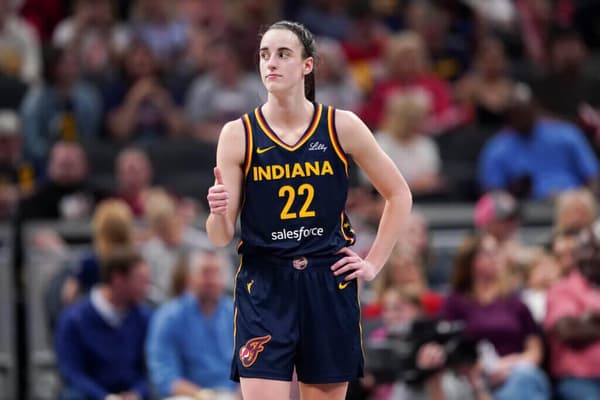Certainly! Let’s delve into the topic of Caitlin Clark and why the panic around her should be reconsidered.
Caitlin Clark, a highly touted rookie in the WNBA, entered the league with enormous expectations and scrutiny. As is often the case with young athletes, especially those with standout collegiate careers, the transition to the professional level can be challenging. For Caitlin Clark, this transition has been accompanied by a level of scrutiny and perhaps premature judgment that may not accurately reflect her long-term potential and impact in the league.
Firstly, it’s important to acknowledge the immense talent and potential that Caitlin Clark possesses. Her achievements in college basketball, where she consistently demonstrated scoring prowess and playmaking ability, rightfully earned her a place among the top prospects in the WNBA draft. Such accomplishments do not fade away overnight; they are foundational aspects of her skill set that require nurturing and development in a new competitive environment.
However, the WNBA presents a different landscape compared to college basketball. The level of competition is higher, defenses are more sophisticated, and the physical demands are greater. These factors collectively create a steep learning curve for rookies like Caitlin Clark, who are adjusting not only to the game’s pace but also to the nuances and strategies specific to professional basketball.
The “Caitlin Clark panic,” as described by Thompson, likely refers to the tendency of fans, analysts, and perhaps even some within the league, to hastily judge her based on early performances or statistics. In today’s sports culture, especially with social media amplifying every game and highlight, there’s a pressure to form quick conclusions about a player’s future based on a small sample size. This rush to judgment often overlooks the developmental trajectory that many successful athletes undergo.
Patience is a virtue often forgotten in sports discourse. Rookies need time to acclimate, to learn the ropes, and to adjust their game to meet the demands of the WNBA. Caitlin Clark, despite her undeniable talent, is no exception to this rule. It’s crucial to allow her the opportunity to grow, to make mistakes, and to learn from them without the burden of premature expectations weighing her down.
Moreover, the support system around Caitlin Clark will play a crucial role in her development. Coaching staff, teammates, and organizational leadership all contribute to the nurturing of young talent. Their guidance, patience, and belief in her abilities will be pivotal in helping her navigate the challenges of her rookie season and beyond.
It’s also worth noting that every player’s journey is unique. Some rookies make an immediate impact, while others take time to find their footing. The early struggles of a player like Caitlin Clark do not define her career trajectory; rather, they serve as valuable lessons in resilience and determination.
In conclusion, the “Caitlin Clark panic” should indeed stop, as Thompson suggests. Instead of succumbing to premature judgments or undue pressure, let’s trust in the process of development. Let’s recognize that Caitlin Clark, like many before her, will face challenges and setbacks along the way. However, with time, patience, and the right support, she has the potential to fulfill the promise that made her a standout prospect in the first place.
As fans of the game, let’s appreciate the journey of growth and improvement that Caitlin Clark and other young athletes undertake. Let’s celebrate their successes and support them through their challenges, understanding that true greatness often emerges from perseverance and dedication over time.

